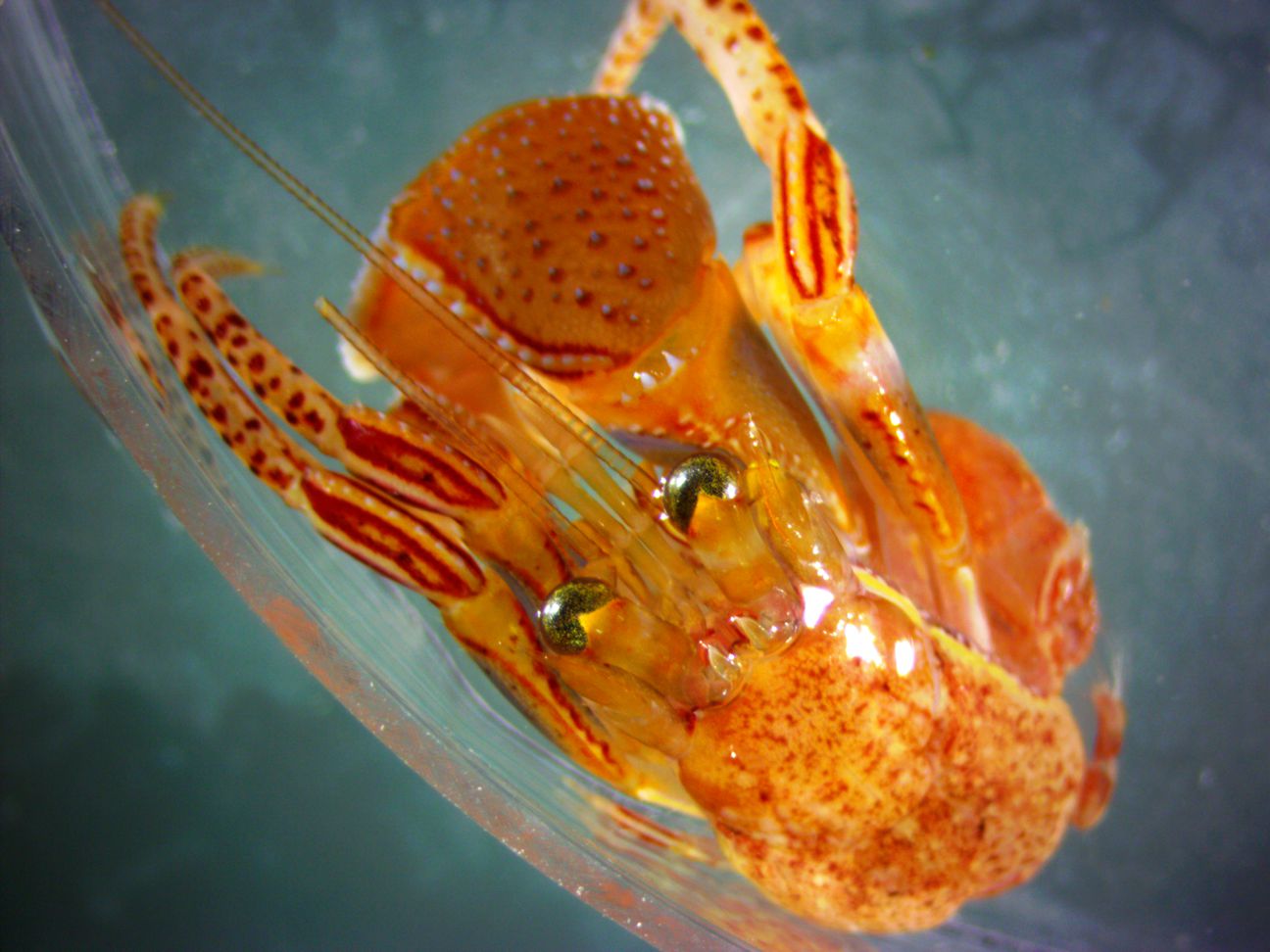Elassochirus tenuimanus (Dana, 1851)Common name(s): Widehand hermit crab |
|
| Synonyms: Bernhardus tenuimanus, Eupagurus tenuimanus, Pagurus tenuimanus | 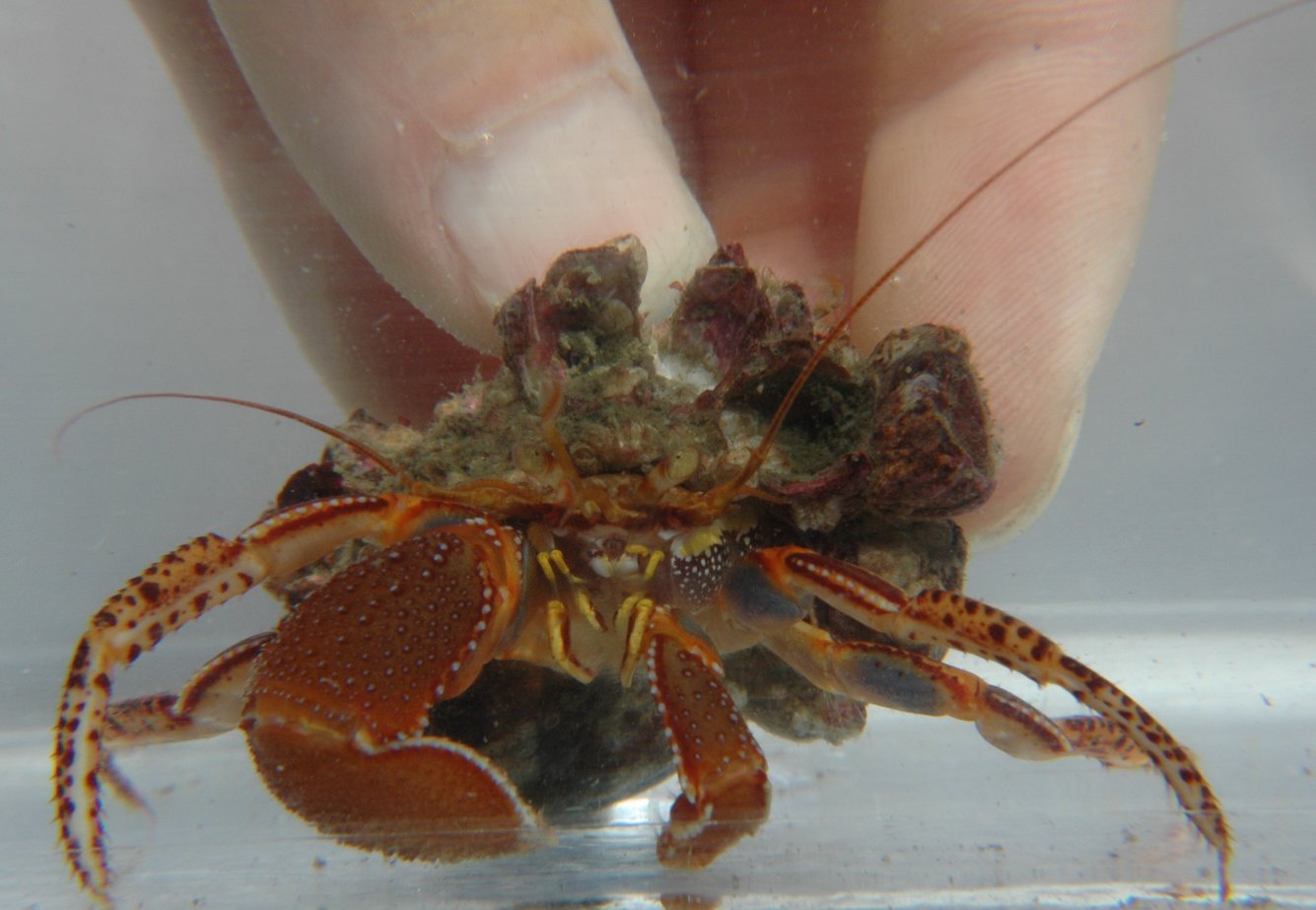 |
| Phylum Arthropoda
Subphylum Crustacea Class Malacostraca Subclass Eumalacostraca Superorder Eucarida Order Decapoda Suborder Pleocyemata Infraorder Anomura Superfamily Paguroidea Family Paguridae |
|
| Elassochirus tenuimanus from 12 m depth, Coffin Rocks, Bowman Bay. | |
| (Photo by: Dave Cowles, July 2005) | |
How to Distinguish from Similar Species: Elassochirus is the only hermit crab genus in this area has a large right cheliped that has a carpus that is wider than long. The other Elassochirus species, such as E. cavimanus and E. gilli, have a propodus to the right cheliped that is narrower than the carpus.
Geographical Range: Bering sea and Aleutian Islands, Alaska to Washington; northwestern Pacific
Depth Range: Intertidal (rarely) to 388 m
Habitat: Around rocks, mud, sand, or shell bottoms, but usually near rocks
Biology/Natural History: This species uses the large right claw to block the entrance to the shell when the animal retreats inside (photo). When walking, the claw is bent beneath the body. The hydroid Hydractina milleri often lives on the shells this hermit crab lives in. Ovigerous females in Washington can be found from August to May. Larvae hatch March to May. Planktonic stages last several months.
| Return to: | |||
| Main Page | Alphabetic Index | Systematic Index | Glossary |
References:
Dichotomous Keys:Coffin, 1952 (as Pagurus tenuimanus)
Hart, 1982
Kozloff 1987, 1996
General References:
Gotshall,
1994
Harbo,
1999
Jensen,
1995
O'Clair
and O'Clair, 1998
Scientific
Articles:
Web sites:
General Notes and Observations: Locations, abundances, unusual behaviors:
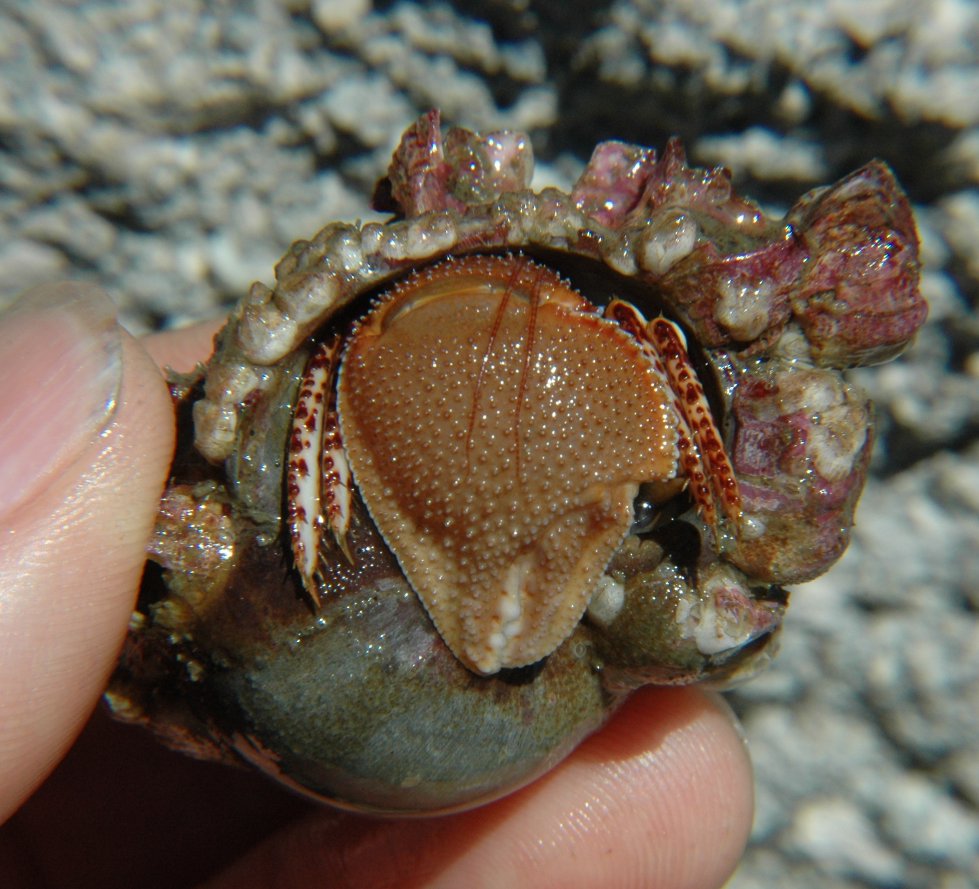
The large, flattened right chela is used to seal the entrance of the
shell when the animal withdraws inside. Photo by Dave Cowles,
July
2005
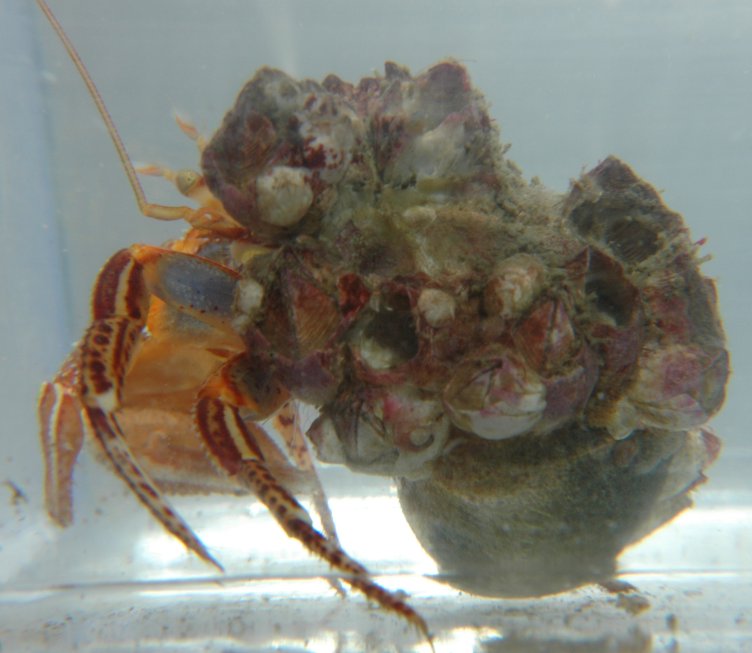
In this side view the color pattern on the walking legs can be
seen:
The propodus
and dactyl
have rows of red spots. The carpus
has red stripes. The merus
has large areas of purplish-blue.
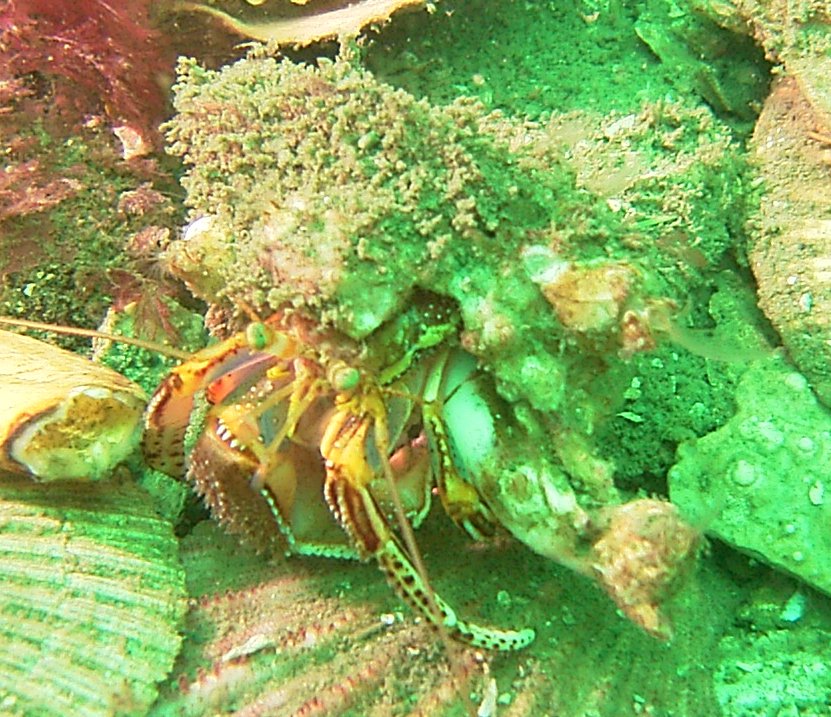
This individual is scavenging in an Enteroctopus
dofleini midden. Underwater photo by Jim
Nestler, July 2005

Another individual photographed underwater by Kirt Onthank, July
2007.
It is living in a leafy hornmouth shell.
The following views of an individual out of its shell are for an individual of 9 mm carapace(rather, thorax) length trawled from 135 m depth in the San Juan Channel, 2018
Dorsal view
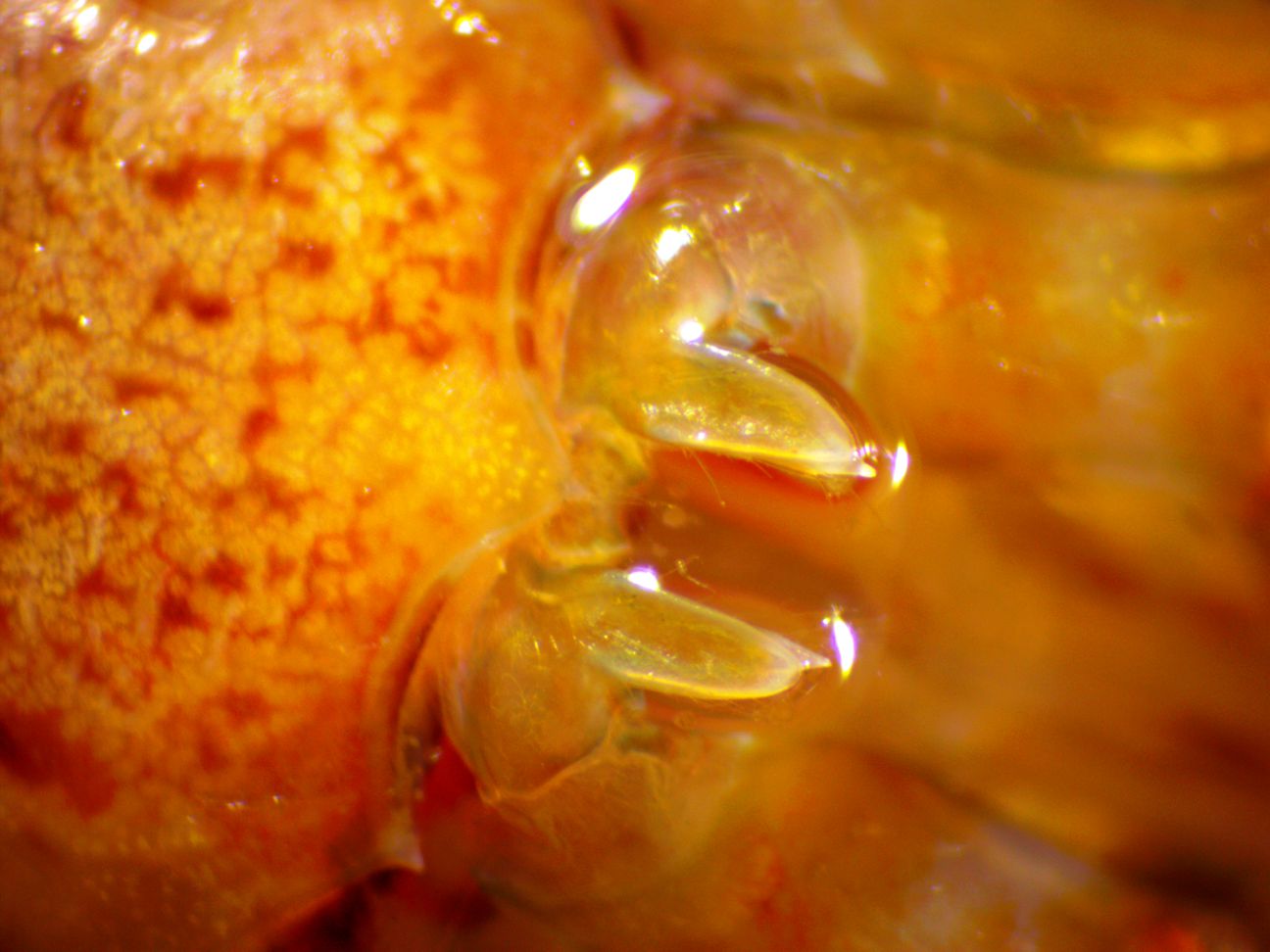
Closeup of the deep eyescale furrows
Right side.
This is a photo of the left side of the rear thorax and abdomen of an individual out of its shell, showing the small legs 4-5. Photo by Dave Cowles, July 2018
Authors and Editors of Page:
Dave Cowles (2005): Created original page
